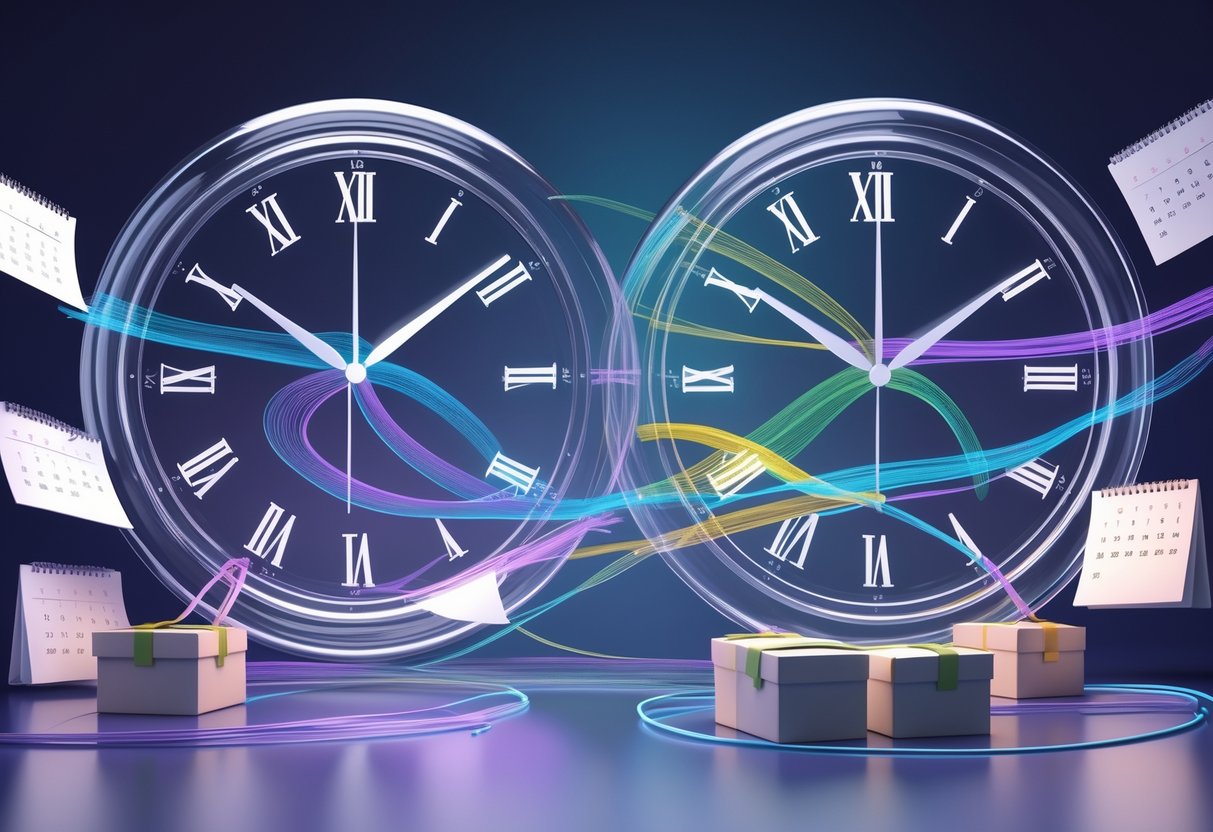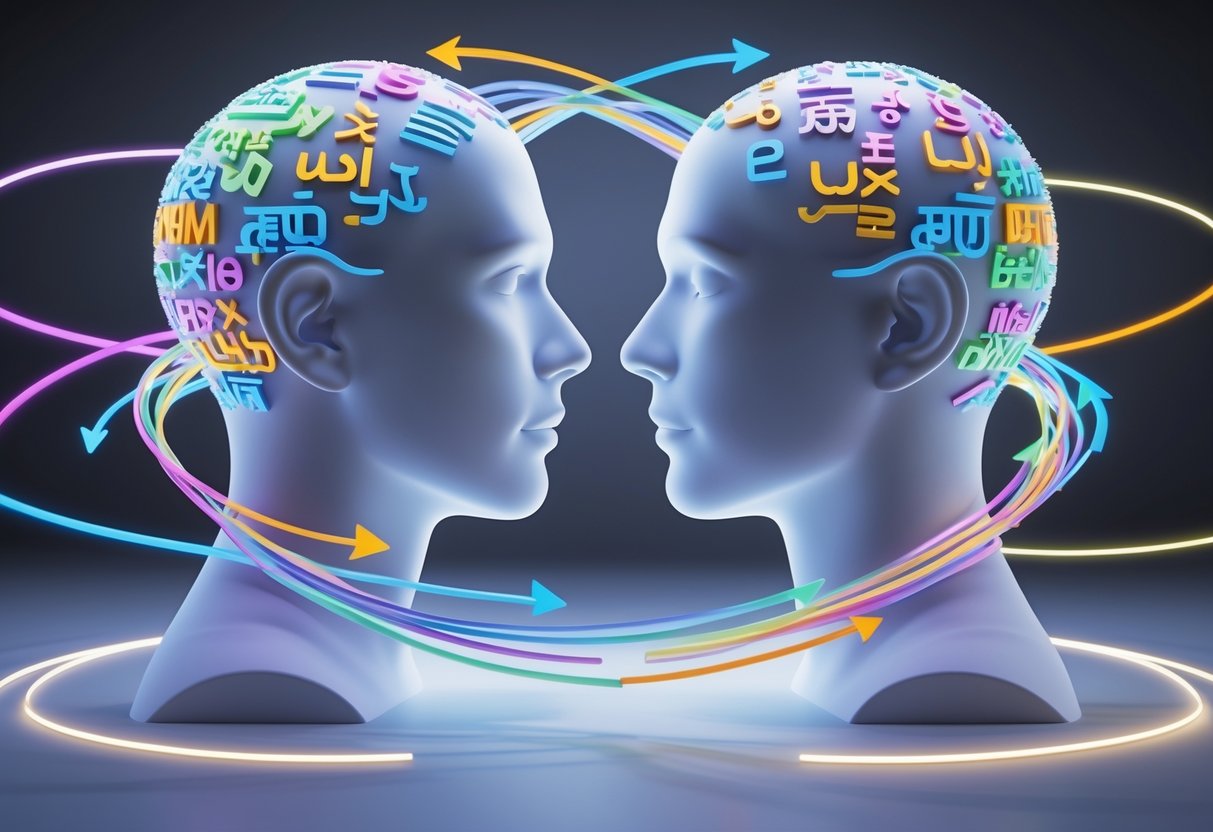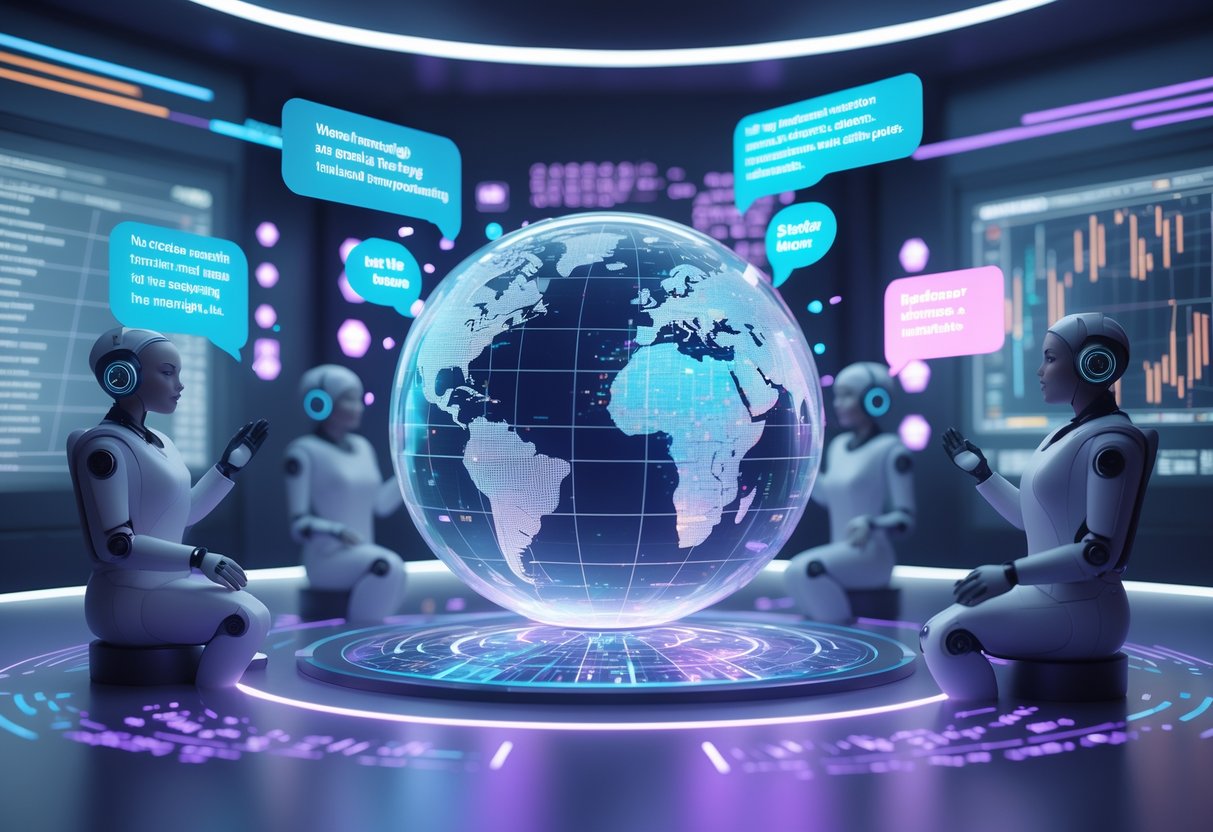Interpretation Differences: Key Distinctions, Methods, and Services
Updated On: August 24, 2025 by Aaron Connolly
Understanding Interpretation Differences
Interpreting and translating both break down language barriers, but honestly, they’re worlds apart in how they work. Interpreting is all about spoken language in real time, while translation tackles written text that you can tweak and polish.
Definition of Interpretation
Interpretation means you take spoken words from one language and turn them into another—right there, on the spot. An interpreter listens and immediately explains what’s being said in a different language.
This happens live at meetings, conferences, or just in regular conversations. The interpreter has to grasp the meaning instantly and get it across to people who speak something else.
Key features of interpreting:
- Only deals with spoken words
- Happens live, in real time
- No do-overs or edits
- Demands quick thinking and fast reactions
You’ll find interpreters at international events, in medical offices, or at business meetings. They make it possible for people to talk face-to-face, even if they don’t share a language.
Interpreters don’t just translate words—they keep conversations flowing and capture the speaker’s tone and intent.
Definition of Translation
Translation is all about changing written text from one language to another. A translator takes documents, books, or websites and rewrites them in a different language.
Translators get time to research, edit, and polish their work. They can use dictionaries, check grammar, and revise as much as they need.
Key features of translating:
- Only for written text
- Time for research and editing
- Can be revised and improved
- Focuses on accuracy and details
Translators handle all sorts of written stuff—legal papers, medical records, books, websites, instruction manuals, you name it.
Their goal is to make the text feel natural in the new language. They keep the original meaning but make it clear for new readers.
Primary Distinctions Between Interpretation and Translation
The biggest difference? Timing. Interpreters work live, with no time to fix mistakes. Translators can take their time and make changes.
| Aspect | Interpretation | Translation |
|---|---|---|
| Medium | Spoken language | Written text |
| Timing | Real time | Extended time |
| Revision | Not possible | Multiple drafts |
| Tools | Memory and notes | Dictionaries and software |
The skills you need are pretty different:
Interpreters need sharp listening skills and quick reflexes. They’ve got to think on their feet and speak clearly, even under pressure. Memory is a huge deal since there’s no time to jot everything down.
Translators, on the other hand, need to write well and pay attention to details. They spend time researching tricky terms and double-checking their work. Technical know-how is often more important than speed.
Where they work is totally different, too:
Interpreters go to live places—courtrooms, hospitals, conference halls. They deal with real people, interruptions, or unclear speech.
Translators usually work solo, often at a computer or with books. They control their environment and set their own pace without much distraction.
Mediums: Spoken Versus Written Communication

Interpreting sticks to spoken language in real time, but translation’s all about written text that you can edit and refine. Each one brings its own set of challenges, especially in the esports world.
Spoken Language in Interpreting
Interpreting means taking spoken words and turning them into another language during live events. This happens simultaneously as players or commentators talk.
Esports interpreters show up at international tournaments where teams all speak different languages. They might listen to a Korean team’s strategy and instantly turn it into English. There’s no time to stop and look up a weird gaming term.
Some big challenges in spoken interpretation:
- Gaming slang changes fast, depending on the game
- Players talk a mile a minute, especially when things heat up
- Technical terms don’t always match across regions
- No second chances to fix a mistake
Spoken gaming language is messy and informal. Players toss out abbreviations, call-outs, and emotional outbursts that don’t always translate.
A lot of interpreters stick to one game title so they can really get the lingo down. They study team comps, map names, and ability details ahead of time.
Pressure’s always on—they have to make snap calls on unclear phrases. If they slip up on a strategy call, it could throw off an entire team.
Written Language in Translation
Translation means taking written text and carefully converting it into another language. Translators handle formal documents, game interfaces, and marketing stuff.
In esports, written translation could cover tournament rules, player contracts, or game localisation. Translators get to do their homework on technical terms and use reference materials.
Why written translation rocks:
- Time to double-check the right gaming terms
- Consistent language across documents
- Can work with gaming experts
- Uses translation memory tools and databases
Game localisation isn’t just swapping words. Translators need to get cultural context right. Adapting League of Legends for British gamers? You’ll need to know their slang and style, which isn’t always the same as American players.
Written work lets you go through as many drafts as needed. Awkward phrasing? Fix it. Technical detail off? Tweak it until it matches the original.
A lot of esports orgs keep style guides to make sure terms like “jungle” always mean the same thing everywhere.
Proofreaders catch mistakes before anything goes public, which isn’t possible in live interpreting.
Timeframes and Delivery

Interpreting happens on the fly during live events. Translation, though, gives you time—sometimes days, sometimes weeks. These timelines really change how you handle quality and what clients expect.
Real-Time Nature of Interpreting
When we interpret at live esports tournaments, there’s no hitting pause. Every word comes through and we have to deliver it within seconds.
Simultaneous interpreting means we’re talking while still listening to the original message. There’s usually a 2-3 second lag, but that’s it.
Consecutive interpreting gives us a short break. We listen to a full idea, then interpret—often after 30-60 seconds.
The pace is wild during fast-paced gaming commentary. Casters talk fast, throw in jargon, and get emotional about every play.
It’s tough because:
- No time to look up anything
- You have to pick terms instantly
- You keep up with the speaker’s rhythm
- Slang and in-jokes pop up out of nowhere
We prep a lot before an event. That means learning game mechanics, team rosters, and the phrases everyone uses.
Turnaround in Translation
Translation projects run on a different clock. Usually, we get hours, days, or even weeks to get it right.
Typical esports translation timelines:
- Tournament announcements: 24-48 hours
- Marketing stuff: 3-5 days
- Rulebooks and guides: 1-2 weeks
- Subtitles: 2-3 days for each hour of video
Having more time means we can revise, research, and double-check everything.
How translation usually goes:
- First draft
- Self-editing
- Check terminology
- Final proofreading
More time almost always means better quality. We can keep things consistent and set the right tone.
But esports doesn’t wait around. Tournaments pop up, players move, and games update overnight. So, we’re always juggling accuracy with speed.
Roles and Skills of Interpreters and Translators
Interpreters and translators need different strengths because they work in totally different ways. Interpreters have to think fast and talk clearly, while translators need to write well and sweat the small stuff.
Required Skills for Interpreters
Quick thinking is everything for interpreters. You’ll see them in action, dealing with real-time situations where they can’t stop to look up a word or fix their grammar.
They listen to someone in one language and immediately switch it to another. This could be during a meeting, a conversation, or a phone call.
A sharp memory helps a ton. Interpreters often work consecutively, so they listen to a chunk, remember it, and then translate.
Speaking skills matter more than writing here. You need to be clear, confident, and get the message across in both languages.
Most interpreters work both ways—say, English to Spanish and back again—sometimes in the same session.
Handling stress is non-negotiable. If you mess up, everyone notices. Interpreters work in hospitals, courts, and business settings where accuracy really matters.
Required Skills for Translators
Writing well in the target language is a must for translators. The best ones are great writers who get grammar, style, and tone.
Translators usually go from a foreign language into their native tongue. That way, the translation sounds natural.
Research chops help translators dig up technical terms and check facts. They’ve got time to use dictionaries and reference books.
Subject expertise often shapes a translator’s career. Some stick to medical, legal, or technical texts.
Computer skills are a big deal. Most translation happens with special software and terminology tools.
Attention to detail can’t be ignored. Translated docs often become official records, so they have to be spot-on.
Professional Training and Certification
University degrees in languages, linguistics, or specialised fields lay the groundwork for both jobs. Many interpreters and translators have at least a bachelor’s degree.
Specialised training programs teach what each job needs. Interpreter training focuses on listening and speaking, while translator programs drill writing and research.
Certifications help you stand out. Court interpreters often need them, and medical translators might need healthcare knowledge.
Ongoing learning is key. Both interpreters and translators keep up with language changes and tech, often through workshops or extra courses.
Real-world experience is huge. Internships or entry-level gigs help you build confidence. Most people start small before tackling the tough stuff.
Modes of Interpretation
Interpretation comes in three main flavors, and each one changes how you move messages from one language to another. Some work better for quick chats, others for big conferences.
Consecutive Interpretation
Consecutive interpretation feels like a conversation with pauses. The speaker talks for a minute or two, then stops. The interpreter jumps in and repeats it in the other language.
This mode needs a great memory and fast note-taking. Most interpreters invent their own symbols and shorthand to keep up. They focus on the meaning, not every single word.
You’ll see consecutive interpretation in:
- Business meetings
- Medical appointments
- Legal settings
- Small group chats
The best part is accuracy. Interpreters get a moment to think and pick the right words. If something’s unclear, they can ask.
But, it does take longer. A 30-minute meeting can easily turn into an hour when you add interpretation.
Simultaneous Interpretation
Simultaneous interpretation happens in real time while the speaker keeps talking. The interpreter sits in a soundproof booth, wears headphones, and speaks into a microphone.
It’s not truly “simultaneous,” though. Interpreters need a few seconds to catch the meaning before they start. They’re usually translating one sentence while already listening to the next.
Equipment needed:
- Soundproof booth
- Professional headphones
- Microphone system
- Audio transmission to audience
You’ll see this at big conferences, international meetings, and live broadcasts. Teams of interpreters usually switch every 20-30 minutes to avoid burning out.
This job brings serious mental pressure. Interpreters make snap decisions with no time to rethink their words. If they hesitate, important info slips away.
Whispered Interpretation
Whispered interpretation means the interpreter sits close to one or two people and quietly translates straight into their ear. It’s handy for small groups who need interpretation while others don’t.
The interpreter keeps their voice low as the main speaker talks normally. Only the people getting the interpretation can actually hear it.
Best situations for whispered interpretation:
- Court hearings with one defendant
- Business negotiations with just a few people
- Medical consultations
- Small private meetings
It’s pretty tough physically since interpreters have to whisper for long stretches. No soundproof booth means they really need to focus hard to avoid distractions.
Discretion stands out as the main benefit here. The interpreter doesn’t interrupt the event’s flow. Still, it only works for tiny groups because of the quiet delivery.
Types of Translation
Translation work falls into a few clear categories, each needing different skills and approaches. Literary translation tries to preserve artistic meaning, legal and technical translation demand total precision, and general translation looks pretty different from specialized work.
Literary Translation
Literary translation is honestly one of the toughest types out there. Professional translators in this field have to capture not just the words, but the author’s style and voice, too.
This kind of translation covers books, poetry, plays, and creative stuff. The translator almost becomes a co-author, recreating the emotional punch in another language.
Literary translators tackle some weird challenges. They need to keep cultural references that readers might not get. They also have to hold onto the rhythm and flow of the original.
Sometimes, they need creative fixes. A joke that lands in one language might flop in another. Translators can spend weeks on just one paragraph, tweaking until it feels right.
The best literary translations just feel natural. Ideally, readers won’t even notice they’re reading something translated.
Legal and Technical Translation
Legal and technical translation asks for extreme accuracy. One wrong word can flip a contract’s meaning or make instructions unsafe.
Legal translators handle contracts, court documents, and regulations. They need to know both legal systems inside out. Different countries have unique legal ideas that don’t always match up.
Technical translators work on manuals, scientific papers, and software guides. They need to know their industry well. A medical translator, for example, has to understand anatomy terms in several languages.
These professional translators usually pick a narrow specialty. They build up expertise over years. Many have backgrounds in the fields they translate for.
Quality control matters a lot here. Mistakes can lead to lawsuits or safety hazards.
General Versus Specialised Translation
General translation covers day-to-day business docs, websites, and marketing stuff. Most translators start here before specializing.
General work means emails, brochures, and basic sites. The language is usually simple. Translators need to write well but don’t need deep technical knowledge.
Specialized translation takes years to master. Medical, legal, and technical areas each have their own jargon. Translators need to really understand the concepts, not just swap words.
Pay varies a lot between these fields. Specialized translators earn more since fewer people can do the job. They also get tougher deadlines and more pressure.
Professional translators often stick to one track. Jumping between general and specialized work takes different skills and client relationships.
Tools and Resources in Language Services

Language pros use different tools depending on whether they’re working with text or real-time speech. Dictionaries are still crucial for both. Translation memories mostly help with written work, and AI is starting to show up everywhere.
Use of Dictionaries and Reference Materials
Dictionaries are the backbone for translators and interpreters alike. Old-school bilingual dictionaries help nail down exact meanings and cultural context.
Specialized dictionaries are a lifesaver in technical fields. Medical, legal, and business dictionaries give the precise terms that regular ones miss.
Reference materials vary by profession:
- Translators use style guides and glossaries
- Interpreters keep quick-reference cards handy
- Both check cultural context guides
Online dictionaries make searching way faster, even during live work. Many include pronunciation guides and sample sentences, which help a lot.
Subject-matter experts often put together custom glossaries for big projects. That way, everyone stays consistent.
Translation Memories and CAT Tools
Translation memories store bits of previously translated text for reuse. These databases help translators work faster and keep things consistent.
Computer-Assisted Translation (CAT) tools include:
- Translation memory systems for quick lookups
- Terminology databases for specialized vocab
- Quality assurance tools to catch errors
These tools speed up the process and help maintain the right terms throughout a project.
Most CAT tools only work with written text. Interpreters can’t really use them live since there’s no time to search.
Popular CAT tools? Trados, MemoQ, and Wordfast come to mind. Many now have cloud versions so teams can share resources.
AI in Translation and Interpreting
AI has really shaken up translation and interpreting lately. Machine translation handles basic text, while AI-powered tools help interpreters look up terms fast.
Written translation gets the most from AI:
- Google Translate covers basic documents
- DeepL offers more nuanced translations
- AI suggests better terms as you go
Real-time interpreting uses AI a bit differently. Smart devices can help with quick lookups or cultural tips during pauses.
Translators often use AI as a draft, then edit for accuracy and style. This combo brings speed plus the human touch.
AI just can’t replace humans in complex situations. Legal hearings, medical consults, and business deals still need people for nuance and quick thinking.
Language Pairs and Directionality

The combination of source and target language really affects how well interpreting works. Most interpreters do best when working into their native language instead of their second.
Source Language Considerations
The source language shapes how well interpreters can process and understand what’s being said. When interpreters go from their native language (L1) to a second language (L2), they fully grasp the message.
Native source language perks:
- Total understanding of cultural cues
- Can spot regional accents and dialects
- Quick with idioms
- Handle pressure better
Working from a second language brings challenges. Interpreters might miss subtle meanings or get tripped up by new words. Some research suggests language-specific quirks can matter more than general direction.
Certain language combos get tricky fast. Chinese-English interpretation, for example, brings big challenges due to differences in sentence structure and word order.
Target Language Expertise
How well interpreters know the target language makes or breaks the final result. Most do better when their native language is the target, since it sounds more natural and fluent.
Into-native-language strengths:
- Natural grammar and syntax
- Right register and tone
- Cultural accuracy
- Lower cognitive load
Studies with English-Chinese interpreters show they’re more fluent working into their native Chinese. This edge matters even more during simultaneous interpretation, where time is tight.
Good prep can help minimize directionality issues. Many pros specialize in one direction based on their strongest language pair, rather than trying to master both.
Overcoming Language Barriers

Language barriers can be tough, but we can tackle them with smart communication strategies and cultural understanding. Professional interpreting services use tried-and-true methods to help people connect across languages.
Facilitating Communication Across Languages
Professional interpreting services bridge the gap when people don’t share a language. It works best when interpreters use clear, simple language instead of complex terms.
Skilled interpreters lean on a few key techniques:
- Break down tough ideas into smaller chunks
- Use visuals if they can
- Repeat important info in different ways
- Check for understanding as they go
Technology helps, too. Real-time translation apps and language software speed things up and boost accuracy.
Cost planning is a big deal when booking interpreters. Prices depend on which languages you need, how long you’ll need them, and whether you want simultaneous or consecutive interpretation.
Most services cover over 200 languages and dialects. They match interpreters to your subject—medical for hospitals, legal for courts.
Sharing materials ahead of time gets the best results. If you give your interpreter key docs, technical terms, and context before the meeting, things go smoother.
Breaking Down Cultural Barriers
Cultural differences can still cause hiccups even when the language is clear. We have to watch for social norms, body language, and communication styles that vary by culture.
Power distance changes across cultures. Some expect strict hierarchy, others like things more relaxed.
Time perception shifts, too:
| Western Cultures | Other Cultures |
|---|---|
| Strict schedules | Flexible timing |
| Quick decisions | Relationship building first |
| Direct feedback | Indirect communication |
Non-verbal cues can mean totally different things. Eye contact might show respect in one place but seem rude in another. Even hand gestures can backfire.
Negotiation styles also shift with culture. Western business often wants fast deals. In many Asian cultures, building relationships comes first.
Professional interpreters train for cultural sensitivity, not just language. They’ll step in if a misunderstanding pops up.
Everyone gets better results with some basic cultural awareness. It helps to know about greetings, gift customs, and which topics are safe to discuss.
Interpretation and Translation in Professional Settings

Professional settings call for specialized language services that work differently from everyday talk. Interpreters handle live events where people need instant understanding, while translators focus on written materials that need to be spot-on.
Conference and Event Interpreting
Conference interpreters focus on real-time communication at business meetings, international conferences, and trade shows. They wear headsets and translate spoken words right as speakers talk.
Most conference interpreters work in pairs or teams. They switch every 20-30 minutes to stay sharp and avoid mistakes.
Common conference settings:
- Business meetings with international partners
- Medical conferences with global guests
- Legal proceedings with foreign participants
- Academic conferences and seminars
Interpreters need to know technical vocab on the fly. There’s no time to pause and look things up. That means lots of prep beforehand.
Many specialize in certain fields. Medical interpreters know health care lingo. Legal interpreters get court procedures and legal language.
Legal and Medical Language Services
Legal and medical settings demand top-notch accuracy from interpreters and translators. Mistakes here can have serious consequences.
Medical interpreting services cover:
- Hospital consultations
- Emergency room talks
- Mental health appointments
- Specialist procedures
Medical interpreters keep patient info private. They translate exactly what’s said, without adding their own spin.
Legal interpreting services show up in:
- Court hearings and trials
- Police interviews
- Immigration proceedings
- Contract negotiations
Legal translators handle documents like contracts, court papers, and immigration forms. These often need certified translations that courts will accept.
Both fields require professional certification. Medical and legal interpreters go through special training and must pass tough exams before working with patients or in court.
The Future of Interpretation and Translation

Technology keeps shaking up the way we break down language barriers. AI systems get more powerful every year.
Still, human translators and interpreters play a crucial role, especially when conversations get tricky or subtle. Machines just don’t always get the nuances.
Emerging Trends in AI and Automation
AI is changing both translating and interpreting faster than most of us expected. Machine learning systems chew through millions of texts and pick up on language patterns surprisingly well.
Real-time translation has gotten really accurate for common language pairs. Tools like Google Translate and DeepL now handle basic documents and chats with pretty decent results.
We’ve even got AI-powered earbuds that translate speech instantly during conversations. That’s wild, isn’t it?
Neural networks keep improving at picking up context and cultural meaning. So, we’re seeing fewer of those hilariously bad mistranslations.
Industry-specific AI is now popping up for legal, medical, and technical fields. These systems learn the jargon that general translation tools usually miss.
But AI still has a tough time with a few things:
- Emotional tone and cultural sensitivity
- Tricky idioms and wordplay
- Documents that call for creative adaptation
- High-stakes situations where mistakes just aren’t an option
Most language service providers now mix AI with human expertise. This combo delivers faster, more affordable services.
The Importance of Human Expertise
Human translators and interpreters aren’t going away any time soon. We bring something to the table that AI can’t really touch.
Cultural understanding is something only humans truly possess. When we translate marketing materials or legal docs, we know what clicks with different audiences. It’s way more than just swapping out words.
Emotional intelligence makes a big difference in interpreting. In medical appointments or legal settings, we notice tone, stress, and even what’s left unsaid.
Creative adaptation—transcreation, really—needs human judgement. When companies roll out ad campaigns in new markets, they rely on translators who get humor, references, and local values.
Quality control is another area where humans step in. Even the best AI stumbles sometimes, and those mistakes can be costly or just plain embarrassing.
We’re constantly picking up new skills to work alongside AI. Modern translators learn to use AI tools, but we focus on the tasks that really require a human touch.
The future? It looks like a partnership. AI handles the routine stuff, and humans take on the complex, creative, or culturally sensitive work.
Frequently Asked Questions

Here are some common questions about the core differences between language professions, types of interpretation, and practical career stuff. We’ll also touch on how these skills show up in modern computing and what ties these language fields together.
What are the main distinctions between translation and interpretation as professions?
Translation deals with written text, while interpretation is all about spoken communication.
Translators get time to research and revise. They use dictionaries and reference materials to get it right.
Interpreters work in real time. They have to think fast and respond on the spot—no time for second guesses.
Translation focuses on precision and exact meaning. Every word counts, especially in legal or technical documents.
Interpreters aim to capture the overall message and tone rather than being perfectly literal.
Work environments are pretty different. Translators usually work solo at a computer. Interpreters work face-to-face in meetings, courts, or conferences.
Could you explain the various types of interpretation services available?
Simultaneous interpretation happens while the speaker talks. Interpreters translate in real time using headphones and microphones.
This method works best for big conferences or international meetings.
Consecutive interpretation lets the speaker finish before the interpreter starts. The interpreter waits for pauses or complete thoughts.
This approach fits smaller meetings and legal settings where precision is key.
Escort interpretation mixes both methods for more casual situations. It’s about getting the gist across, not every single word.
This style works well for business tours or informal meetings.
Whisper interpretation means quietly translating for one or two people. The interpreter sits close and speaks softly while the main speaker keeps going.
This method helps when only a few people need translation.
In what ways do simultaneous interpretation processes differ from other methods?
Simultaneous interpretation needs special equipment like headphones and microphones.
Interpreters usually work in soundproof booths at big events. The technical setup costs more than other methods.
The mental load is intense. Interpreters have to listen, process, and speak in different languages all at once.
Most work in pairs and swap every 20-30 minutes to avoid burnout.
Accuracy can slip compared to consecutive interpretation. The speed means some details might get lost.
Still, the conversation flows naturally for everyone involved.
Training for simultaneous interpreters is tough. They need lots of practice with the gear.
It’s a steeper learning curve than with other interpretation styles.
How do the roles of translators and interpreters contrast within the computing field?
Software translation means converting user interfaces and docs into other languages.
Translators work with code strings and technical specs. They need to understand programming basics and keep the language accurate.
Technical interpreters help out during international software meetings. They explain programming ideas across language barriers.
Real-time talk about code takes serious technical know-how.
Website localisation combines translation and cultural tweaks. Translators adjust content for specific regions—think currency, dates, and local references.
Documentation translation covers user manuals and help systems. Translators need to grasp the software to explain features clearly.
Technical accuracy is a must since users rely on these instructions.
What similarities exist between the tasks of translating written content and interpreting spoken language?
Both jobs require fluency in multiple languages. Practitioners need a deep understanding of grammar, vocabulary, and culture.
Language skills alone don’t cut it without cultural knowledge.
Cultural competency is crucial in both fields. Translators and interpreters have to know social customs and business practices.
Context shapes meaning more than the words themselves.
Subject matter expertise helps both professions. Legal translators and court interpreters both need legal know-how.
Medical professionals benefit from understanding healthcare terms and procedures.
Both roles bridge communication gaps. The main goal is helping people understand each other, no matter the language.
Success comes from clear, accurate communication—not just perfect literal translation.
What should someone consider if they’re looking to pursue a career in translation and interpretation?
You’ll need more than just basic fluency. Most employers actually want you to have university-level education in your target languages.
They usually expect native-speaker skills in at least one language. That’s just the reality.
Your area of specialization can really impact your income. Legal and medical interpretation tends to pay a lot more than general business gigs.
If you’re into technical translation, you might find plenty of steady remote jobs.
Certification rules change depending on where you live and what you want to do. Court interpreters, for example, must get specific legal certifications.
Medical interpreters, on the other hand, have to get healthcare-related training and credentials.
Translators usually go freelance or join agencies. Interpreters might land staff jobs at hospitals or courts.
Think about whether you’d rather work remotely or meet people face-to-face. That choice can shape your whole career.
